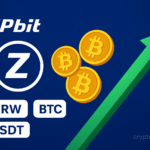The Bank of England (BoE) reaffirmed that its proposed limits on stablecoin holdings are meant to be temporary, to be removed when stablecoins no longer pose a risk to the broader economy. Deputy Governor Sarah Breeden emphasized that the caps will stay in place until regulators are confident that digital assets no longer threaten credit provision or financial stability.
What’s Going On
The BoE has floated proposals to limit how much in stablecoins individuals and businesses may hold, with suggested caps ranging between £10,000 and £20,000 for retail holders. Senior officials have now clarified that such restrictions are not intended to be permanent policy, but a precautionary measure until stablecoins’ risks can be better controlled.
Breeden argued the BoE will only reconsider lifting the limits “once we see that the transition no longer threatens the provision of finance to the real economy.” The focus is on ensuring that outflows from bank deposits into stablecoins do not jeopardize credit availability or destabilize core banking functions.
Background & Regulatory Framework
- The proposed caps are part of a broader push to regulate stablecoins more rigorously in the UK, especially those deemed systemic — e.g. stablecoins likely to see wide adoption for payments.
- Exemptions are reportedly under consideration: for instance, large businesses or crypto exchanges might be allowed to hold more than the caps allow, under a waiver system.
- In the proposed regime, the BoE would regulate “systemic sterling stablecoins,” while the Financial Conduct Authority (FCA) would oversee non-systemic stablecoins.
- The BoE and HM Treasury are also working on a resolution framework to ensure stability and continuity if a stablecoin issuer fails.
Why This Matters
1. Balancing Innovation and Risk
The BoE is signaling a cautious approach: it does not intend to permanently suppress stablecoins, but rather to allow them room when their risks are better understood and contained. This posture may be read as an attempt to maintain the UK’s competitiveness in the fintech sector while preserving financial stability.
2. Impact on Crypto Users and Businesses
If fully enforced, the caps could constrain use cases for stablecoins in the UK — as stores of value, for payments, or in DeFi-like constructs. But acknowledging the caps are temporary may comfort industry participants that this is an interim measure rather than a long-term barrier.
3. Regulatory Precedent
How the UK manages stablecoin regulation may be closely watched5 by other jurisdictions. The strategy of temporary constraints tied to stability thresholds could become a model in other markets wrestling with the challenge of accommodating digital money without endangering the banking sector.
Risks & Criticisms
- Enforcement difficulties: Tracking stablecoin holdings across multiple wallets and platforms is inherently challenging, especially given privacy features and cross-jurisdiction flows.
- Innovation constraints: Critics argue even temporary caps may deter investment, especially from retail5 users and startups that rely on scalable, open access.
- Regulatory mismatches: As other jurisdictions embrace freer stablecoin frameworks, overly cautious limits in the UK could put it at a competitive disadvantage.
- Ambiguity on timing: Without clear metrics for when caps will be lifted, market participants may face uncertainty and hesitation.
What to Monitor Next
- Timing & criteria for lifting caps — When will the BoE feel confident enough to relax the limits?
- Exemption rules — Which businesses or users will receive waivers, and under what conditions?
- Regulatory consultation and feedback — The BoE plans to publish a consultation soon, seeking input from industry stakeholders.
- Adoption of stablecoins under new rules — How market participants adjust or delay growth in the UK in response to the regime.
- Global reactions — Whether other central banks or regulators adopt similar “temporary cap” models or push back against them.
Bottom Line
The Bank of England has reaffirmed that proposed caps on stablecoin holdings are not intended as permanent constraints but safety measures to be phased out once the risks to credit provision and financial stability are sufficiently mitigated. While the move underscores regulatory caution, it also leaves open the possibility of more permissive digital money policies in the future, contingent on evolving market maturity and oversight effectiveness.
EQI1XFK2












